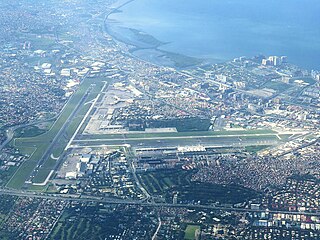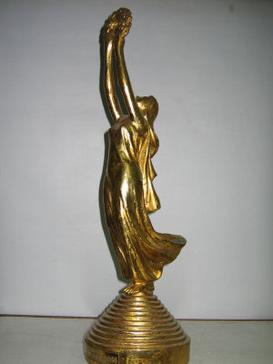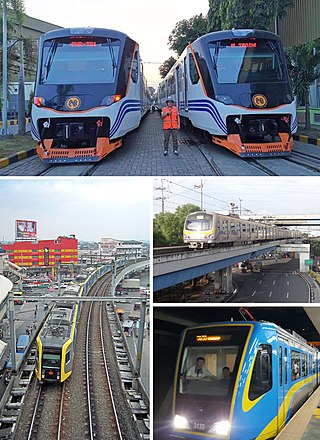| Venue | |
|---|---|
| Date(s) | 23 April – 3 May 1995 |
| Velodrome | Amoranto Velodrome |
The 1995 Asian Cycling Championships took place at Amoranto Velodrome, Quezon City, Metro Manila, Philippines from April 23 to May 3, 1995.
| Venue | |
|---|---|
| Date(s) | 23 April – 3 May 1995 |
| Velodrome | Amoranto Velodrome |
The 1995 Asian Cycling Championships took place at Amoranto Velodrome, Quezon City, Metro Manila, Philippines from April 23 to May 3, 1995.
| Event | Gold | Silver | Bronze |
|---|---|---|---|
| Individual road race | |||
| Individual time trial | Andrey Mizurov | Kim Tae-ho | Aleksandr Dyadichkin |
| Event | Gold | Silver | Bronze |
|---|---|---|---|
| Individual road race | |||
| Individual time trial | Ma Huizhen | Song Chung-mi | Chang Hsu-ying |
| Event | Gold | Silver | Bronze |
|---|---|---|---|
| Sprint | Hyun Byung-chul | Kazuhiro Kaida | Toshinobu Saito |
| 1 km time trial | Narihiro Inamura | Hong Suk-hwan | Masanaga Shiohara |
| Keirin | Masanaga Shiohara | Tsutomu Yokota | |
| Individual pursuit | Vadim Kravchenko | Eugen Wacker | |
| Points race | Masahiro Yasuhara | Daisaku Takahashi | Sergey Lavrenenko |
| Elimination | Cho Ho-sung | Sergey Konnov | Norberto Oconer |
| Team pursuit |
| Event | Gold | Silver | Bronze |
|---|---|---|---|
| Sprint | Chang Yubin | Seiko Hashimoto | Shim Eun-jung |
| 500 m time trial | Chang Yubin | ||
| Individual pursuit | Ma Huizhen | Wang Qingzhi | |
| Points race | Chang Yubin | Nurhayati | Chang Hsu-ying |

Metropolitan Manila, formally the National Capital Region and commonly called Metro Manila, is the capital region and largest metropolitan area of the Philippines. The region is located on the eastern shore of Manila Bay, between the Central Luzon and Calabarzon regions. It consists of 16 highly urbanized cities: the City of Manila, Caloocan, Las Piñas, Makati, Malabon, Mandaluyong, Marikina, Muntinlupa, Navotas, Parañaque, Pasay, Pasig, Quezon City, San Juan, Taguig, and Valenzuela, and one municipality: Pateros. The region encompasses an area of 619.57 square kilometers (239.22 sq mi) and a population of 13,484,462 as of 2020. It is the second most populous and the most densely populated region in the Philippines. It is also the 9th most populous metropolitan area in Asia and the 6th most populous urban area in the world.

Manila, officially the City of Manila, is the capital and second-most populous city of the Philippines. Located on the eastern shore of Manila Bay on the island of Luzon, it is classified as a highly urbanized city. As of 2019, it is the world's most densely populated city proper. It was the first chartered city in the country, and was designated as such by the Philippine Commission Act No. 183 on July 31, 1901. It became autonomous with the passage of Republic Act No. 409, "The Revised Charter of the City of Manila", on June 18, 1949. Manila is considered to be part of the world's original set of global cities because its commercial networks were the first to extend across the Pacific Ocean and connect Asia with the Spanish Americas through the galleon trade; when this was accomplished, it was the first time an uninterrupted chain of trade routes circling the planet had been established. Manila is among the most-populous and fastest-growing cities in Southeast Asia.

Makati, officially the City of Makati, is a 1st class highly urbanized city in the National Capital Region of the Philippines.

In the Philippines, regions are administrative divisions that primarily serve to coordinate planning and organize national government services across multiple local government units (LGUs). Most national government offices provide services through their regional branches instead of having direct provincial or city offices. Regional offices are usually but not necessarily located in the city designated as the regional center.

Ninoy Aquino International Airport, originally known as Manila International Airport (MIA), is the main international airport serving the Manila metropolitan area in the Philippines. Located between the cities of Pasay and Parañaque, about 7 kilometers (4.3 mi) south of Manila proper and southwest of Makati, it is the main gateway for travelers to the Philippines and serves as a hub for PAL Express, and Philippine Airlines. It is also the main operating base for AirSWIFT, Cebgo, Cebu Pacific, and Philippines AirAsia.

The Ateneo de Manila University, also known simply as the Ateneo de Manila or the Ateneo, is a private, Catholic research university and basic education institution in Quezon City, Philippines. Founded in 1859 by the Jesuits, it is the second-oldest Jesuit-administered institution of higher learning in the Asia-Pacific.

Valenzuela, officially the City of Valenzuela, is a 1st class highly urbanized city in the National Capital Region of the Philippines. According to the 2020 census, it has a population of 714,978 people.

The South Luzon Expressway (SLEX), signed as E2 of the Philippine expressway network and R-3 of the Metro Manila arterial road network, is a controlled-access highway that connects Metro Manila to the provinces in the Calabarzon region on the island of Luzon in the Philippines. The expressway has a length of 49.56 km, traveling from its northern terminus at the Magallanes Interchange in Makati to its southern terminus at Santo Tomas, Batangas, connecting it to the Southern Tagalog Arterial Road. A portion of the expressway from the Magallanes Interchange to the Calamba Exit is part of Asian Highway 26 of the Asian highway network.

The Battle of Manila was a major battle of the Philippine campaign of 1944–45, during the Second World War. It was fought by forces from both the United States and the Philippines against Japanese troops in Manila, the capital city of the Philippines. The month-long battle, which resulted in the death of over 100,000 civilians and the complete devastation of the city, was the scene of the worst urban fighting fought by American forces in the Pacific theater. Japanese forces committed mass murder against Filipino civilians during the battle and American firepower killed many people. Japanese resistance and American artillery also destroyed much of Manila's architectural and cultural heritage dating back to the city's founding. Manila became one of the most devastated capital cities during the entire war, alongside Berlin and Warsaw. The battle ended the almost three years of Japanese military occupation in the Philippines (1942–1945). The city's capture was marked as General Douglas MacArthur's key to victory in the campaign of reconquest. To date, it is the last of the many battles fought within Manila's history.

Eat Bulaga!, formerly Eat... Bulaga!, is a Philippine television variety show broadcast by GMA Network. Originally hosted by Tito Sotto, Vic Sotto, Joey de Leon, Chiqui Hollman and Richie D'Horsie, it premiered on Radio Philippines Network on July 30, 1979. The show was originally produced by Production Specialists, Inc. TAPE Inc. produces the show since July 7, 1981. Alexa Miro, Betong Sumaya, Buboy Villar, Cassy Legaspi, Mavy Legaspi, Paolo Contis, Kimpoy Feliciano, Dasuri Choi, Glaiza de Castro, Kokoy de Santos, Michael Sager, Winwyn Marquez, Yasser Marta, Chariz Solomon, Arra San Agustin and Isko Moreno currently serve as the hosts, with participation of Music Hero Band. It is the longest running variety show in the Philippines. In December 2023, the Intellectual Property Office of the Philippines - Bureau of Legal Affairs (IPOPHL-BLA) cancelled TAPE Inc.'s trademark renewal for Eat Bulaga! which was approved on June 14, 2023.

The Department of Transportation is the executive department of the Philippine government responsible for the maintenance and expansion of viable, efficient, and dependable transportation systems as effective instruments for national recovery and economic progress. It is responsible for the country's land, air, and sea communications infrastructure.

The Metro Manila Skyway, officially the Metro Manila Skyway System (MMSS) or simply the Skyway, is an elevated highway serving as the main expressway of Metro Manila, Philippines. It connects the North and South Luzon Expressways with access to Ninoy Aquino International Airport via the NAIA Expressway (NAIAX). It is the first fully grade-separated highway in the Philippines and one of the longest elevated highways in the world, with a total length of approximately 39.2 kilometers (24.4 mi).
The Unified Vehicular Volume Reduction Program (UVVRP), commonly called number coding or color coding, is a road space rationing program in the Philippines that aims to reduce traffic congestion, in particular during peak hours, by restricting the types of vehicles that can use major public roads based on the final digit of the vehicle's license plate. First implemented in 1995 in Metro Manila, the similar programs has also been implemented in the cities of Baguio, Cabanatuan, and Dagupan and the province of Cavite.

Francisco Moreno Domagoso, also known as Isko Moreno Domagoso or simply Isko Moreno, is a Filipino politician, actor, host and entrepreneur who served as the 27th mayor of Manila, the capital city of the Philippines, from 2019 to 2022. Before entering politics, Moreno first gained notability as an actor and television personality.
1995 in the Philippines details events of note that happened in the Philippines in the year 1995.

José Lázaro Fuerte Advíncula Jr. is a Filipino prelate of the Catholic Church and a professed member of the Dominican Order, who became 33rd Archbishop of Manila on June 24, 2021. He became a cardinal in November 2020. He previously served as bishop of San Carlos from 2001 to 2011 and Archbishop of Cápiz from 2011 to 2021. On December 16, 2020, Pope Francis appointed Cardinal Advincula as a member of the Dicastery for Clergy.

The Luna Awards are awards given annually by the Film Academy of the Philippines (FAP) to recognize the outstanding achievements of the Filipino film industry. The first awards were presented in 1983 in Pasay. It is considered to be the Philippine counterpart of the Oscars. It used to be known as the FAP Awards until in 2005 when it got its current name. Since 2007, the Academy started holding simple awards ceremonies due to lack of government funding and reduction of its share from MMFF earnings. This also caused some delays for ceremony scheduling.

Rail transportation in the Greater Manila Area is a major part of the transportation system in Metro Manila and its surrounding areas. It consists of the Manila Light Rail Transit System, Manila Metro Rail Transit System, and the PNR Metro Commuter Line. The network makes up the majority of active railways in the country and bear the brunt of providing the metropolis with rail as a faster alternative mode of transport other than buses and jeepneys. However, these systems are currently insufficient for the rapidly expanding metropolis; to address this, new lines and line extensions are under construction, which will extend the system far out into neighboring regions.